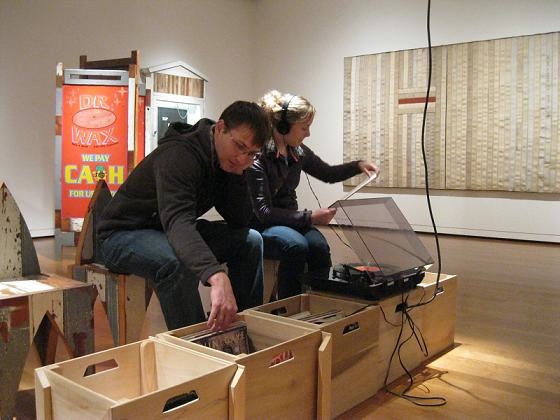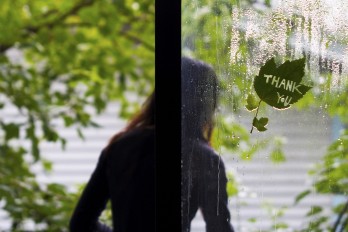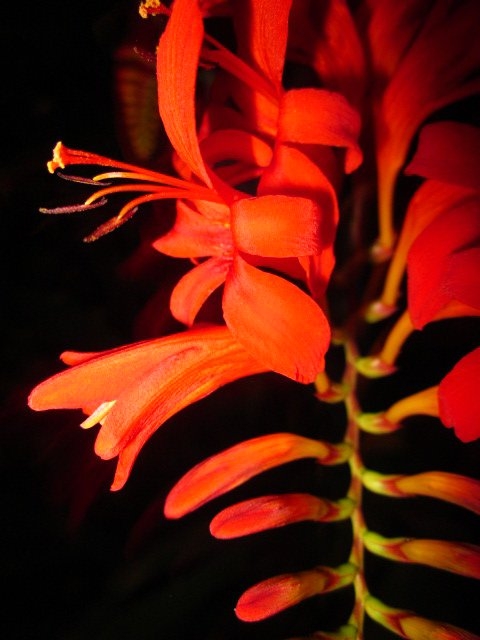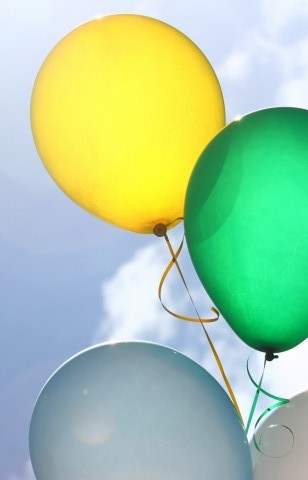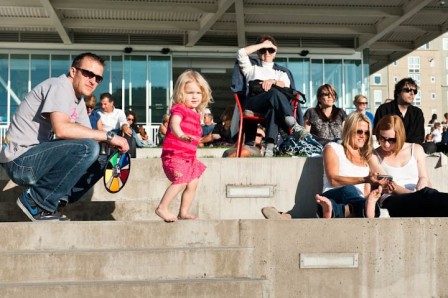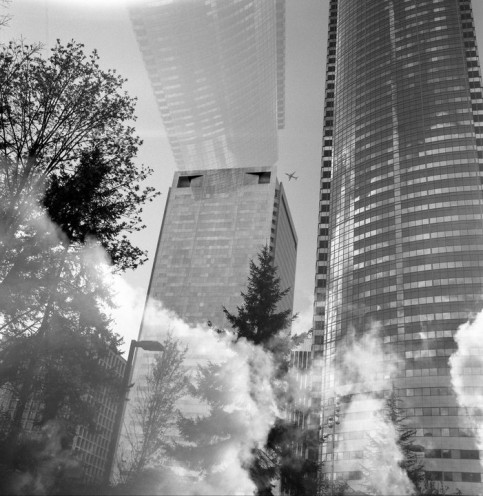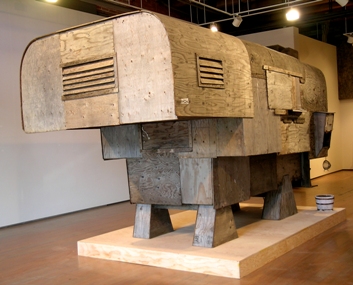Lumber-Made Listening
Theaster Gates’ Listening Stools, one of the sculptural forms in the exhibit The Listening Room, have helped transform SAM’s Knight-Lawrence Gallery into an open space for music and ideas. Their design may be simple and made from recycled wood, coming from the floorboards of a Chicago police station, but the stools invite visitors to sit, relax, and engage with the art, music and each other. They often lead guests to converse about a record they’re currently holding, and I can’t say how many people have learned to play their first 33 1/3” vinyl record on a turn table while sitting in one of these modest wooden chairs.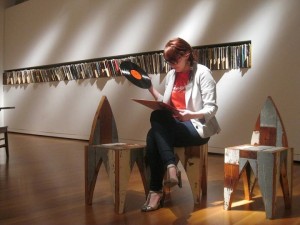
Although his artistic training is in ceramics Gates’ sculpted pieces for The Listening Room draw from his seemingly endless resources using recycled lumber as a medium that allows him to transcend artistic traditions and place focus on social engagement through discarded materials-come-art. The Listening Stools are one of these unlikely art objects carrying a history in their structure. Other lumber materials present in the exhibit are the ware board record crates (see below), the original sandwich board from Dr. Wax’s record store made to look like a Japanese Shoji screen, and the entirely recycled wood deejay table faced with a carved wooden altar screen sourced from a defunct Chicago church.
Another example of Gates’ material repurposing is his Temple Exercises (2009) at the Museum of Contemporary Art in Chicago, which constructed a temple-like structure from modular ware boards from the abandoned Wrigley Gum factory in the heart of Chicago. This became a site for spiritual exercises and performance by groups such as Gates’ own ensemble, the Black Monks of Mississippi. The same Wrigley ware boards are used in the Listening Room for the record crates that accompany the turntable in the middle of the gallery in which visitors are invited to peruse records and listen in on headphones at any time during museum hours.
“I’m one person,” says Gates, “one whole person who thinks about friendship and neighborliness and God as much as I think about object making.”[1] His chairs achieve the sense of transformation that Gates’ work self-consciously seeks to convey. Inherent in this transformation is the vinyl vertebrae lining the back wall of the gallery: Dr. Wax’s Record Archive. Entering the gallery for the first time viewers are perhaps not expecting to see a long shelf of records and deejay table. Set into the back wall Dr. Wax’s records are joined with the musical sounds that can be heard emanating from the gallery before visitors even enter the space. They are immediately faced with the aural and visual qualities of this kinesthetic installation and find themselves asking the question “How do I engage with this art?” By the time visitors reach the Listening Stools, they have intoned through osmosis the intertwining themes of music, history, politics, and space that are addressed by the exhibit. It is the music’s audio ability to communicate cultural, political, and artistic history to a public willing and able to engage that brings meaning to the lumber-made objects present in the gallery and comes full circle to connect the archive of cultural knowledge to its listeners.
-Ryan R. Peterson, Curatorial + Community Engagement Intern
[1] Art In America, December 2011, p. 126
Last photo: SAM patrons Faye Peterson and Mike O’Brien browsing records in the Listening Room. Photograph by author. JPEG file.
